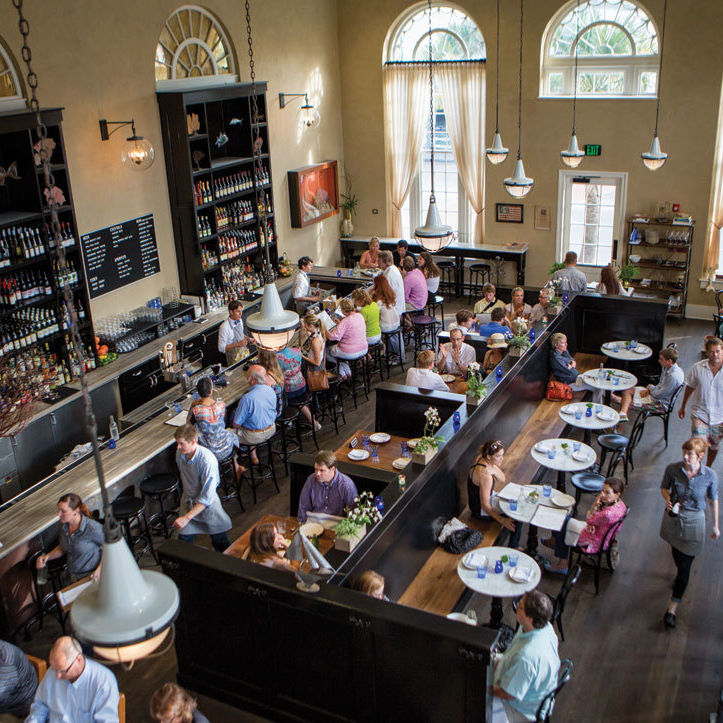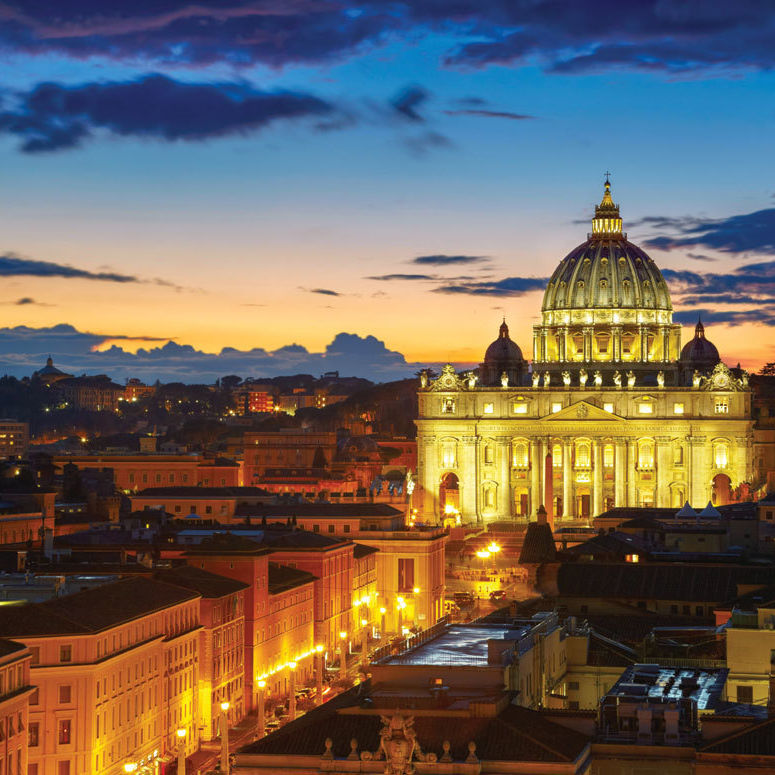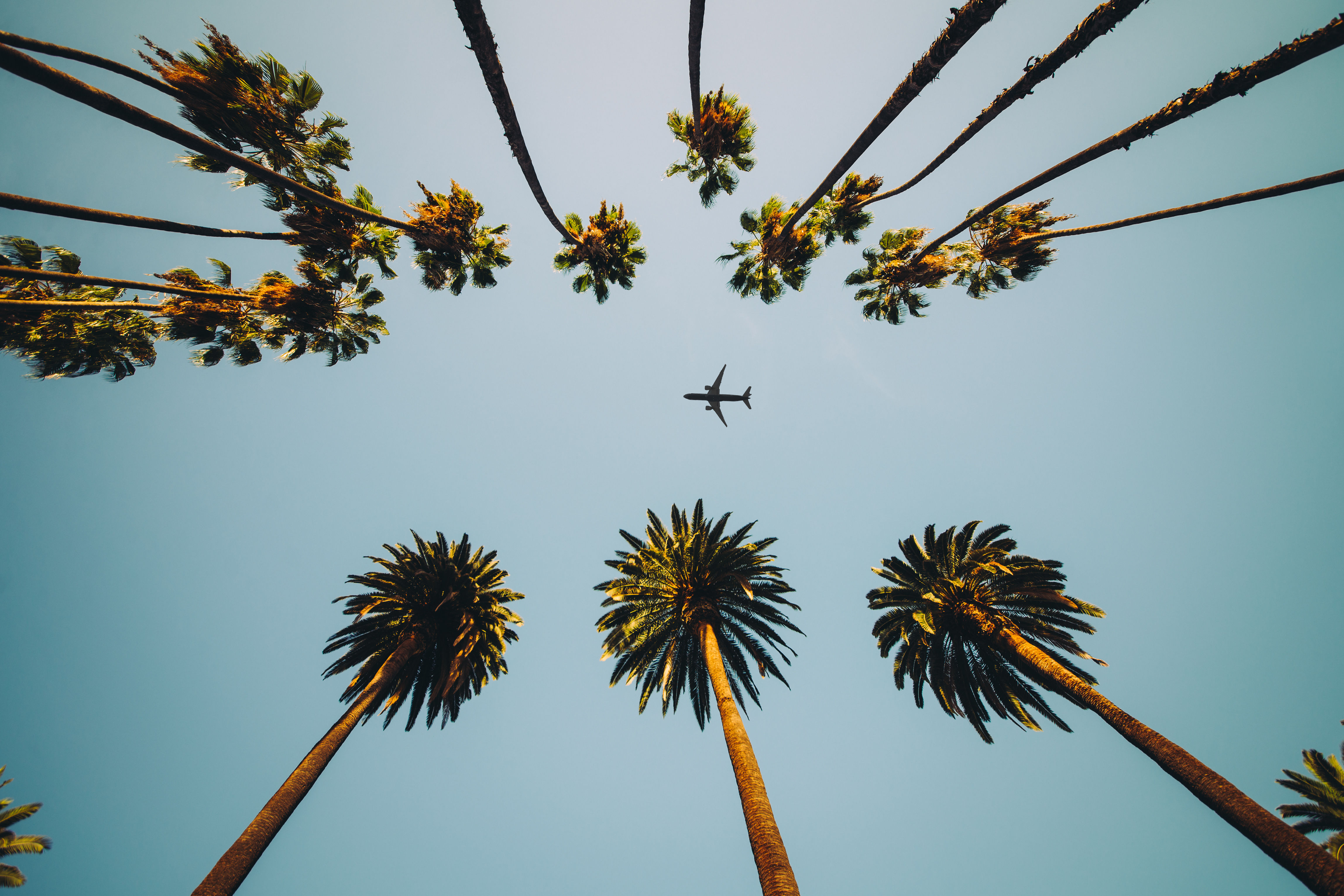Great Escapes: Cuba
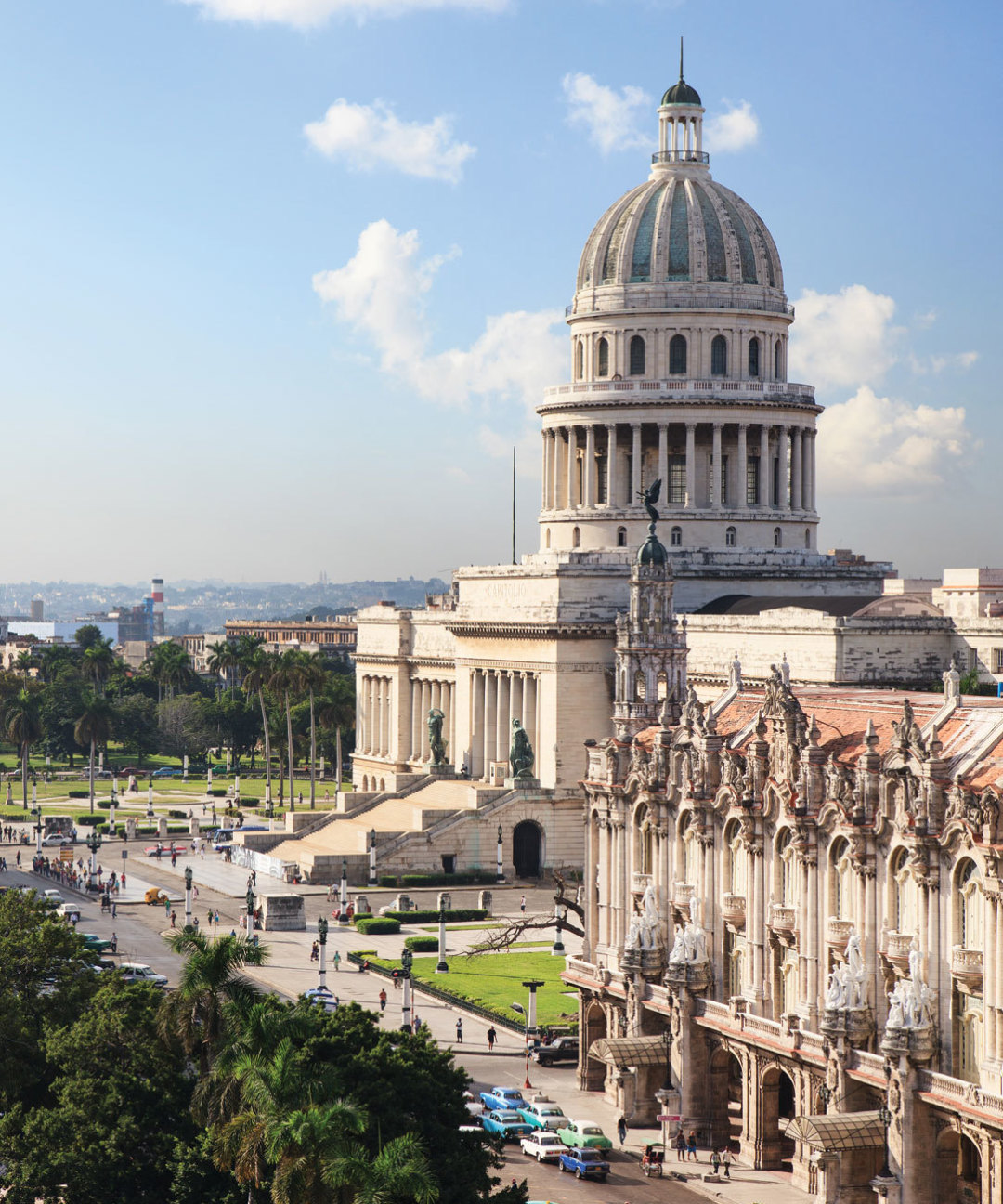
El Capitolio, which houses the Cuban Academy of Sciences
When Havana’s streets are quiet and empty they hold little charm. Only its people can distract you from the pockmarked sidewalks and crumbling buildings. Thankfully, the people almost always fill the streets—watching the world go by from a stoop, playing stickball or soccer, drinking rum and hanging out on the malecón, the rocky seawall that runs from Habana Vieja west into the leafy neighborhood of Vedado. And these days, amid the colorfully run-down façades and omnipresent salsa music, the people are creating a different Havana, a city whose energy is like none other.
Now that US-Cuba relations have been upgraded to it’s complicated, it seems only a matter of time before the nearly 500-year-old city is blanketed in Starbucks and Señor Frogs. I wanted to see it before then, endeavoring to travel to the island nation during a strange interim period—after the Obama administration loosened regulations on American travel to the country in January, but before travel restrictions to Cuba are lifted altogether, whenever that might be.
As a journalist, I might have obtained a visa from the Cuban Interests in Washington, DC. But after weeks of trying and failing to contact the Interests to get the proper forms and other information, I decided to thread the needle, listing myself and my boyfriend as journalists on US government forms but entering Cuba on tourist visas supplied by a charter service, hoping neither country would notice or mind. It was actually easier than I thought. After two flights (Houston to Miami, where the charter is based, then Miami to Havana) and a thorough but friendly five-minute interview with Cuban immigration officials inside the Havana airport, we found ourselves traveling via taxi to Vedado’s 10-story Hotel Roc Presidente, which dates back to the 1920s and was Havana’s first skyscraper.
The lobby gave the impression of faded luxury, its old-fashioned seating and collection of neoclassical statues stripped of their formality by the warm Caribbean air. We arrived at our room and promptly discovered that the lights wouldn’t come on, although the television and the phone worked. Ah, communism, I thought, as we waited for a bellboy to arrive, watching a show about Las Vegas magicians dubbed into Spanish and interspersed with commercials for Storage Wars and Scared Straight. I wondered for a moment whether this might be some sort of anti-American propaganda channel, at which point the bellboy showed up and slid a room key into a slot by the door—who knew?—magically turning on both the lights and air conditioning.
Speaking of propaganda, it doesn’t take a visitor very long to discover that the Cuban government doesn’t really do subtle. Two blocks north of our hotel, facing the rocky seaside malecón, a large banner in Spanish on a neighboring building read “Year 57 of the Revolution!” A few blocks east is the Monte de las Banderas, a dramatic installation made up of dozens of Cuban flags arranged in semicircles and surrounded by walls inscribed with Cuba’s motto in huge letters: “HOMELAND OR DEATH, WE SHALL OVERCOME!” Meanwhile, on the opposite end of Vedado is the Plaza de la Revolución, a large but strangely empty square framed by several government buildings—two of which are emblazoned with giant portraits of Ché Guevara and Camilo Cienfuegos, another leader of the revolution—and the José Martí memorial, a towering, windowless spire that could easily be mistaken for the futuristic lair of some sort of overlord.
While in the neighborhood, we walked to the Christopher Columbus Cemetery, said to be the largest in the Americas. After paying the tourist-only entrance fee, we wandered aimlessly among opulent headstones and mausoleums until a bored security guard volunteered for an impromptu tour, pointing out the memorial to 29 firefighters who died battling a fireworks explosion a century ago; the grave of a member of the Buena Vista Social Club; the corrupt, long-gone president buried in a tomb designed to look like a jail cell; and the marble domino tile decorating the grave of a woman who lost her fortune after betting on double-three in a high-stakes game. The most famous grave is not that of Columbus (he’s nowhere to be found) but that of a woman named Amelia, known as La Milagrosa, who died in childbirth and is said to have been discovered in her grave cradling the child that was buried at her feet.
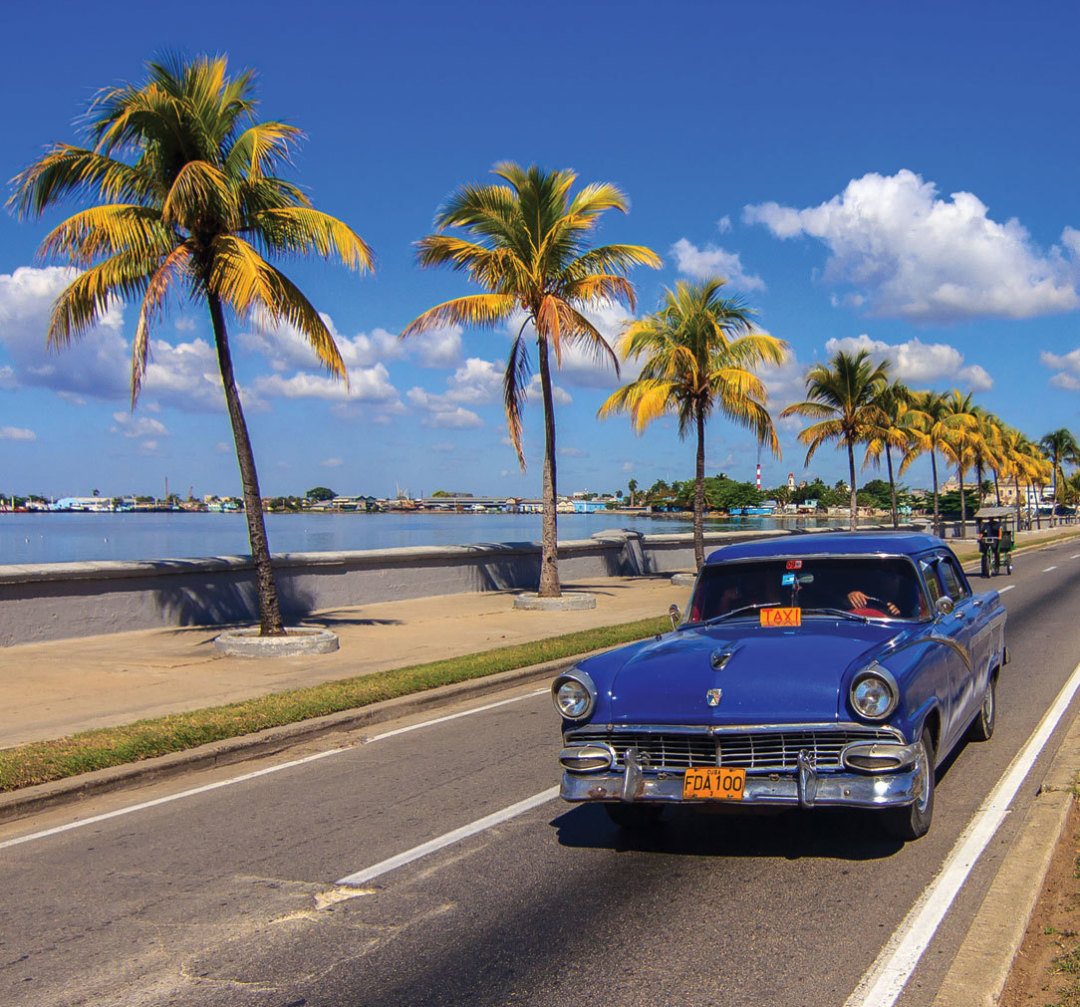
Cruising the Malecón
Image: Shutterstock
A few days later we left Vedado for the colonial heart of the city, Habana Vieja, and the brand-new Habana 612 hotel. A 12-room property, it felt light and airy, with stucco and brick arches and thick wooden beams in the ceiling paired with a minimalist, modern decor, a sort of Spanish-colonial-meets-IKEA aesthetic. The hotel is run by Habaguanex, a government-owned corporation under the direction of the Office of the Historian of Havana City. Habaguanex’s hotels, restaurants, cafés, bars and shops were created to promote the tourism industry in Havana in 1994 after the collapse of the Soviet Union, with varying degrees of success—the hotels seem well-run, but the government-owned restaurants are known for bland offerings and indifferent service.
To really experience Cuban food and hospitality, you have to eat at a paladar, a dining concept that bears some explanation. In the early ’90s, having lost its chief benefactor in the collapse of the Soviet Union, the Cuban government was compelled to open up more economic opportunities for its citizens. This led to the rise of paladares, privately owned restaurants typically run out of families’ homes, and casas particulares, homes renting rooms to travelers. Did AirBnB—which, incidentally, began offering its services in Havana in March—crib its business model from one that Cuba instituted in 1997?
The best ropa vieja we ate was at Porto Habana, a paladar in a converted apartment on the 11th floor of a mid-century high-rise just steps from our hotel in Vedado. A few blocks west, next door to Fábrica de Arte Cubano, a hip new art and music performance space, a former vegetable oil factory has been transformed into El Cocinero, a stylish restaurant and bar with a stunning second-floor patio that could hold its own in Brooklyn or Miami, although the mojitos there would cost significantly more.
As rum is part of the cultural patrimony here, it seemed to me that drinking as much of it as possible everywhere I went was only polite. Understandably, mojitos and daiquiris are the most popular concoctions, given their distinctly Cuban heritage (some believe daiquiris were invented by an American in Cuba during the Spanish-American War), but I couldn’t stop drinking piña coladas in Havana, possibly the last place on earth where they’re still prepared with fresh coconut cream and pineapple juice rather than cheap, artificial mixers. Embargoes: not entirely bad, I guess.
Even after all these years, most tourists still follow Ernest Hemingway’s advice and head to El Floridita for daiquiris and La Bodeguita del Medio for mojitos, both of them just blocks from his former room at the Ambos Mundos Hotel in Habana Vieja. The former still feels classically luxurious, notwithstanding the bronze statue of the author leaning against the bar and the tour buses delivering crowds in packs. La Bodeguita, equally crowded and overpriced, aims for a more laid-back vibe, its walls covered in scribbled names of patrons.
Just a few blocks away, savvier drinkers queue up for a table at El Chanchullero de Tapas. (Look for the sign that reads, in Spanish, “Hemingway was never here.”) It reminded me of some of the best new restaurants in Houston—its cool, unpolished vibe was executed with vision and attitude instead of a big budget, and complemented by a small menu of well-executed classics like chicken fricassee.
Finally in the mood for some culture neither edible nor potable, we headed to the Museum of the Revolution and the Museum of the City of Havana, housed in the former presidential palace and governor’s residence, respectively. The city museum had some interesting historical relics—I liked the old stagecoach and the Spanish military uniforms— but the Museum of the Revolution was tired and dated, its rooms and rooms of display cases seemingly untouched since the 1960s. Furthermore, given its core mission—documenting the oppression and poverty of pre-Castro Cuba—it seemed odd that our tour began in Fulgencio Batista’s grand old presidential ballroom. As messages go, look at all the beautiful things owned by the evil imperialists that oppressed our people isn’t the most coherent.
Of late, Havana is attempting to modernize and present a picturesque façade for its million-plus annual tourists (mostly from Canada and Europe), a project funded by profits from its Habaguanex properties. (Cuba expects to see one and a half million American tourists annually if and when the travel ban is lifted.) The cobblestone streets of the old city are being replaced with more pedestrian-friendly stones. Scaffolding is everywhere—including around the dome of the Capitolio (which looks just like the US Capitol building, although slightly taller, because men are the same everywhere).
Along the malecón, buildings in a terrible state of repair sit next to sleek, ultra-modern cafés with unobstructed views of the ocean. Some of this is an enduring legacy of 2008’s Hurricane Ike, which cast an even longer shadow here than stateside, tearing a path of destruction through Cuba before churning northwest toward Houston.
After a few days in Havana, it’s easy to see why American-friendly resorts have colonized so much of Mexico and the Caribbean. Cuba is challenging, not least because services like the Internet are basically unavailable to travelers outside the larger hotels, which themselves charge by the hour for access. Locals earn about $20 Cuban Convertible Pesos per month, or about what we spent on two rounds at El Floridita, and this economic disparity has contributed to the rise of jineteros, the hustlers and scam artists who populate the old city and will aggressively try to direct you into their restaurants, sell you discount cigars (which occasionally turn out to be boxes of sand, according to some travel bloggers) or talk you into an overpriced taxi ride or an unregistered casa particular.
To avoid them, my boyfriend and I holed up in the Hotel Nacional, a huge and hugely impressive edifice situated on a bluff overlooking the malecón. The cigar shop there is more expensive than the official, government-run Casas del Habano around town, but its goods can be enjoyed with cocktails on the hotel’s stunning grounds, whose relaxed, easy perfection lies in stark contrast to the glamorous surrounding decay.
Our last evening in Havana found us in the Parque Central, a lush urban green space tucked between the Capitolio and the bustling Paseo del Prado promenade, sharing a cigar over a game of cards (dominos would have been more Cuban, I know). As it turns out, the jineteros hawking rides in their candy-colored classic convertibles were easily rebuffed by four simple words: we did that yesterday. So it felt good to be in the park, among couples sharing benches, teenagers meeting friends, and, just over our shoulders, a couple dozen old men passionately arguing about baseball.
It wasn’t as pretty as the lawn of the Hotel Nacional, but it was alive. Such is Cuba.



